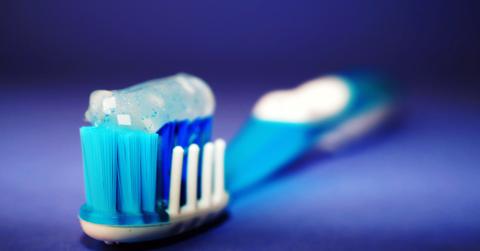Biodegradable Microbeads Could Change The Way Our Cosmetics Impact The Planet
Updated May 24 2019, 12:06 p.m. ET
Just in time for the United States ban on the production of waterway-contaminating microbeads to take effect in July, scientists have announced that they have figured out how to make biodegradable microbeads.
The little plastic particles, which have been added to various cosmetics, drugs, exfoliators and cleansers for years, are being gradually phased out in accordance with the “Microbead-Free Waters Act of 2015,” which calls for the banning of all microbeads production and sales by July 2019. So this invention comes just. In. Time.
Microbeads destroy marine life.
When the microbeads inevitably end up in waterways, they wreak havoc on marine life. Microbeads absorb toxins present in the water, and can take hundreds of years to biodegrade. As marine life gobbles up the little pieces of plastic, they get caught in animal guts and invariably wind up on our dinner plates: little, toxic evidence of our pollution.
The United National Environment Programme found the microplastics in shower gel as microbeads is equivalent in volume to the amount of plastic used in shower gel packaging. And just one bottle of Johnson & Johnson’s Clean & Clear contains more than 330,000 microbeads.
Yuck. Okay, so we know microbeads are no bueno. But with the ban coming into effect so soon, what to do about our blackheads?
Science, as usual, has found the answer.
Scientists at the University of Bath’s Centre for Sustainable Chemical Technologies have created biodegradable microbeads that—get this—can be made with renewable resources.
Gizmodo reports that scientists dissolve cellulose from the tough fibers in plants, and force the cellulose through little holes in a tubular membrane to make spherical droplets. From the research paper:
“Here, it is demonstrated, for the first time, that a cross-flow membrane emulsification–phase inversion process can be used to generate stabilized microdroplets of cellulose dissolved in an organic electrolyte solution (1-ethyl-3-methylimidazolium acetate:DMSO) in a sunflower oil-Span 80 continuous phase. The emulsion is subsequently coagulated with an antisolvent, resulting in the formation of solid, spherical, and biodegradable cellulose microbeads.”
Once dried, the tiny beads will maintain their shape in all the same products microbeads were used for: from soaps and exfoliators to toothpastes and paints. But here’s the best part. These cellulose balls naturally turn to sugars out in the environment—or when fed to microbes in treatment plants.
For different products, the researchers found they could change the physical properties of the beads to make them harder or softer as needed.
The future of microbeads is renewable — and biodegradable.
Once the trials are complete, and more research is done for the use of the biodegradable beads in medications, the team plans to work with companies to get the beads back into products.
Only this time, without any side effects. If only the cosmetics industry could one day be so progressive. On second thought, it actually is starting to look like one day it just might.
